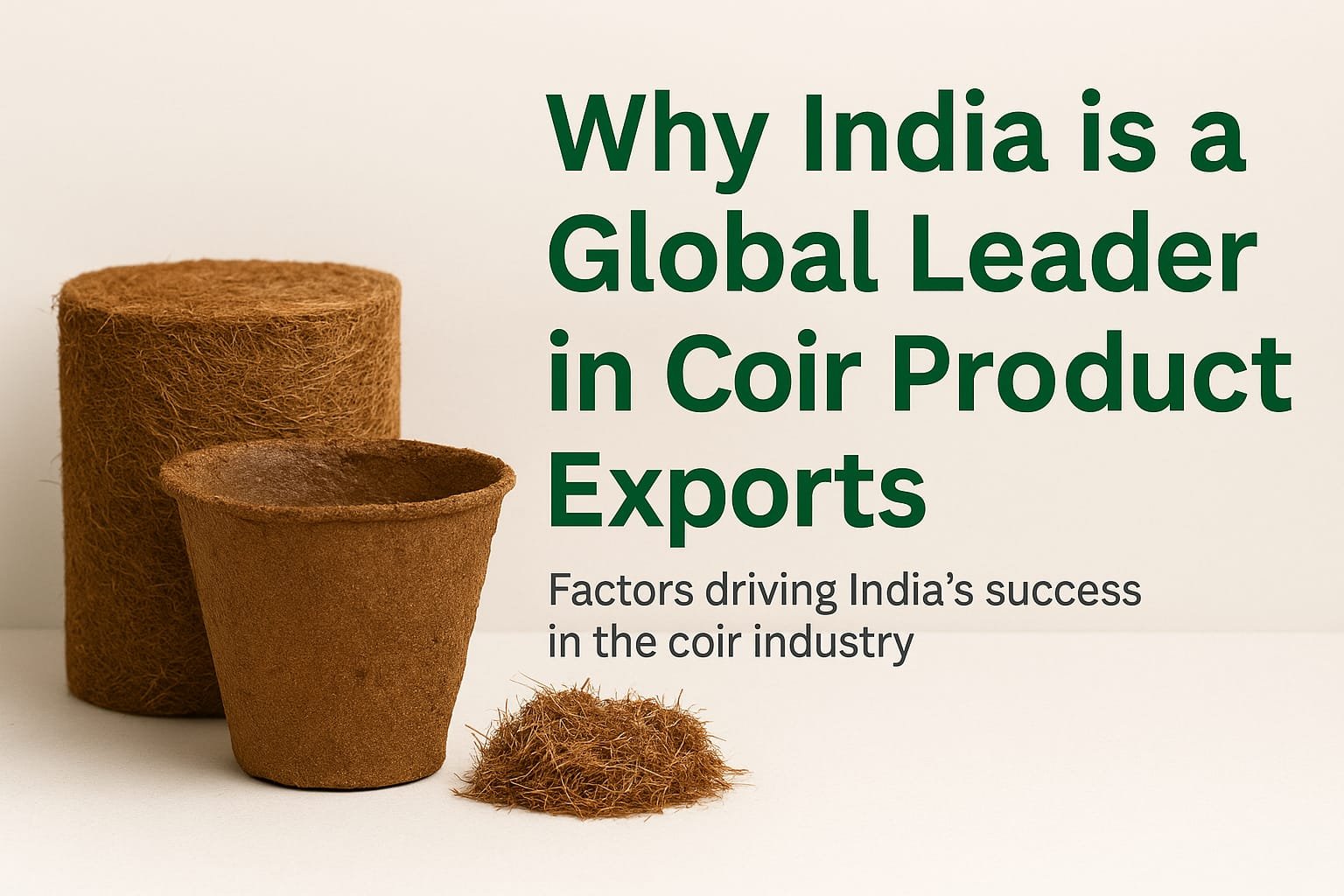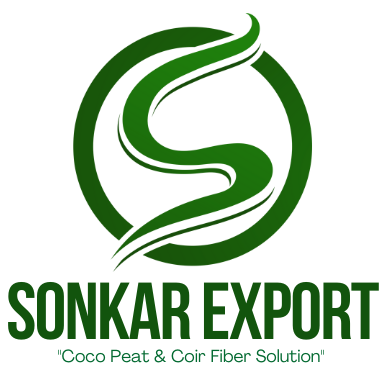
India, a country rich in coconut cultivation and traditional craftsmanship, has emerged as the global leader in coir product exports, commanding more than 60% of the world market. This dominance is not by accident—it is the result of a unique blend of natural resources, skilled labor, robust infrastructure, and proactive government support. Coir, derived from the fibrous husk of coconuts, is an eco-friendly and sustainable material used in a variety of industries, including agriculture, construction, packaging, and home decor.
Let’s explore the reasons behind India’s leadership in this growing global market and why coir exports from India continue to thrive.
🌴 Abundance of Raw Material
India ranks among the top coconut-producing countries in the world. Southern states like Kerala, Tamil Nadu, Karnataka, and Andhra Pradesh are rich in coconut plantations. These regions produce millions of coconuts annually, generating enormous amounts of husk—a raw material used to make both coir fiber and coco peat. The ready availability of high-quality husk gives India a consistent and cost-effective supply chain.
Additionally, the climate in these regions supports year-round cultivation, allowing for continuous production of coir materials without seasonal disruption.
🛠️ Traditional Skill Meets Modern Machinery
India has a long-standing tradition of coir craftsmanship, particularly in Kerala, where the coir industry is centuries old. Today, this tradition has evolved with the adoption of mechanized processing units, enabling high-volume and high-precision manufacturing.
There are thousands of coir mills, spinning units, and fiber extraction centers across the country. These facilities produce a vast range of coir products, including:
Coir ropes and yarn
Mats and carpets
Coir geotextiles
Coco peat grow bags and blocks
Door mats, brushes, and floor coverings
The seamless integration of handcrafted artistry and automated production ensures a wide product variety, catering to both niche and large-scale international demands.
📈 Government Initiatives and Export Support
The Indian government, through organizations like the Coir Board of India (under the Ministry of MSME), plays a vital role in boosting the industry. Key initiatives include:
Skill development and training for rural workers
Subsidies and loans for setting up coir units
R&D funding to innovate biodegradable and high-durability coir products
Support for export documentation, trade fairs, and certifications
Schemes like the Coir Udyami Yojana and SFURTI (Scheme of Fund for Regeneration of Traditional Industries) have enabled small-scale entrepreneurs to modernize and expand their export capacity.
India’s coir exports are supported through coastal shipping networks, strategic export hubs in Kochi, Tuticorin, and Chennai, and digital trade platforms connecting suppliers with global buyers.
🌏 Strong Global Demand for Sustainable Products
In a world increasingly shifting toward eco-friendly, biodegradable, and sustainable products, coir has become a highly sought-after material. Countries like the USA, Netherlands, China, Germany, Australia, and Japan rely heavily on India for importing coir-based products.
In agriculture, coco peat blocks and grow bags are preferred for hydroponics and greenhouse farming.
In infrastructure and erosion control, coir geotextiles are used to prevent soil erosion and restore vegetation in environmentally sensitive zones.
In home furnishing, natural fiber mats, carpets, and brushes appeal to eco-conscious consumers.
Indian exporters provide coir products that are compliant with international quality standards, including OMRI certification, ISO certification, and phytosanitary inspections, making them trusted suppliers in the global market.
🚢 Ease of Export and Global Reach
India’s extensive port network, standardized packaging methods (like compressed coco peat bricks), and digital export procedures allow seamless international trade. Coir products are shipped in large volumes in 5 kg blocks, 650g bricks, or bundled mats, maximizing space and reducing freight costs.
The Make in India and Atmanirbhar Bharat initiatives have also enhanced India’s export visibility and credibility, helping coir suppliers expand their footprint into new markets across Europe, North America, Africa, and the Middle East.
✅ Final Thoughts
India’s leadership in the global coir product market is the result of an ecosystem that combines natural abundance, traditional skill, modern innovation, and institutional support. As the world moves toward greener solutions, India’s coir industry is well-positioned to meet the rising demand for sustainable, biodegradable, and multi-functional products.
For businesses looking to source coir products, India remains the most reliable, scalable, and sustainable choice—offering quality, quantity, and craftsmanship under one roof.
